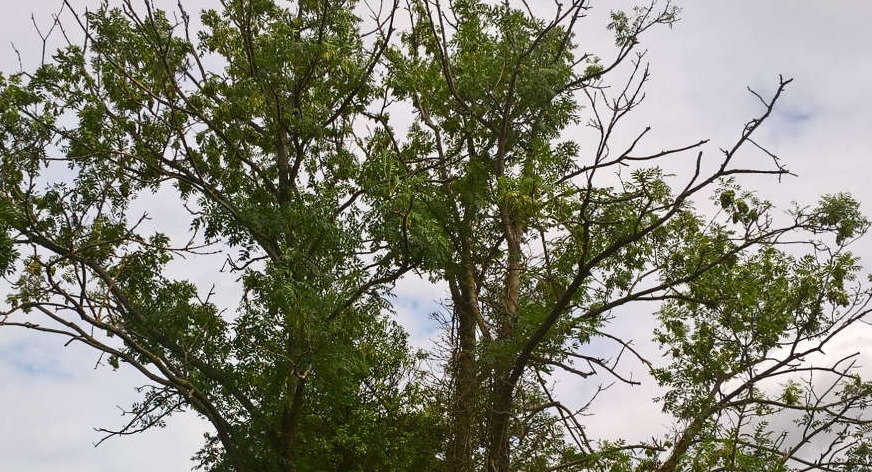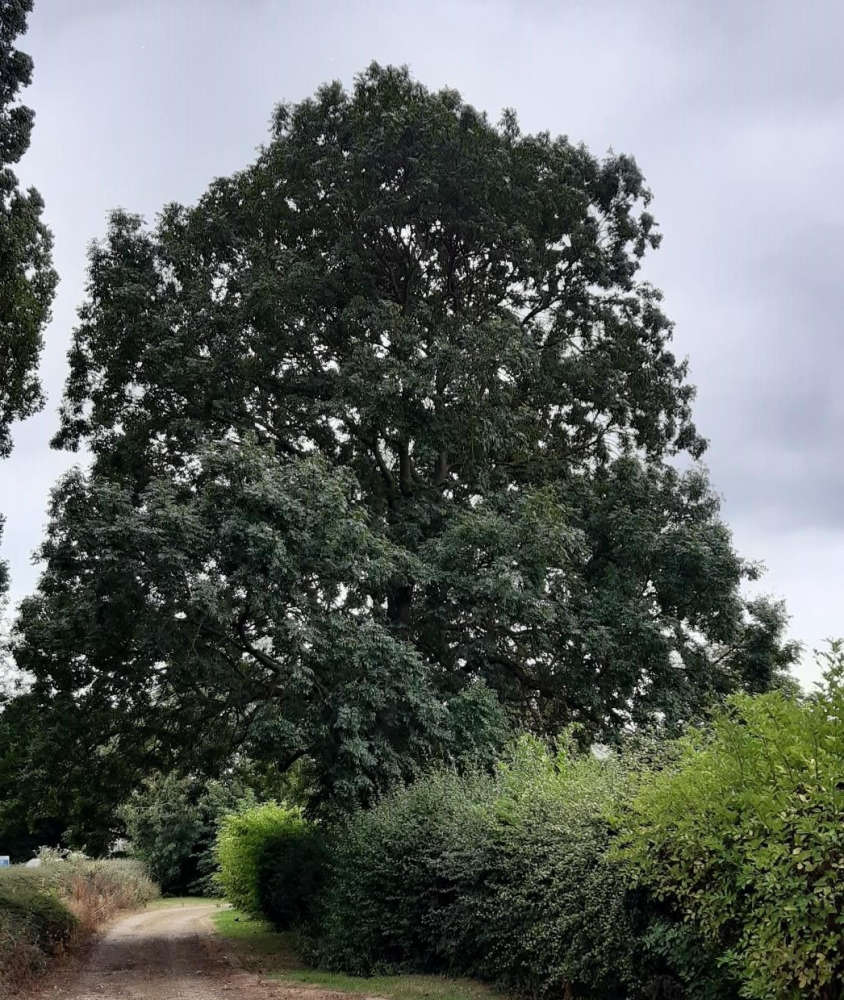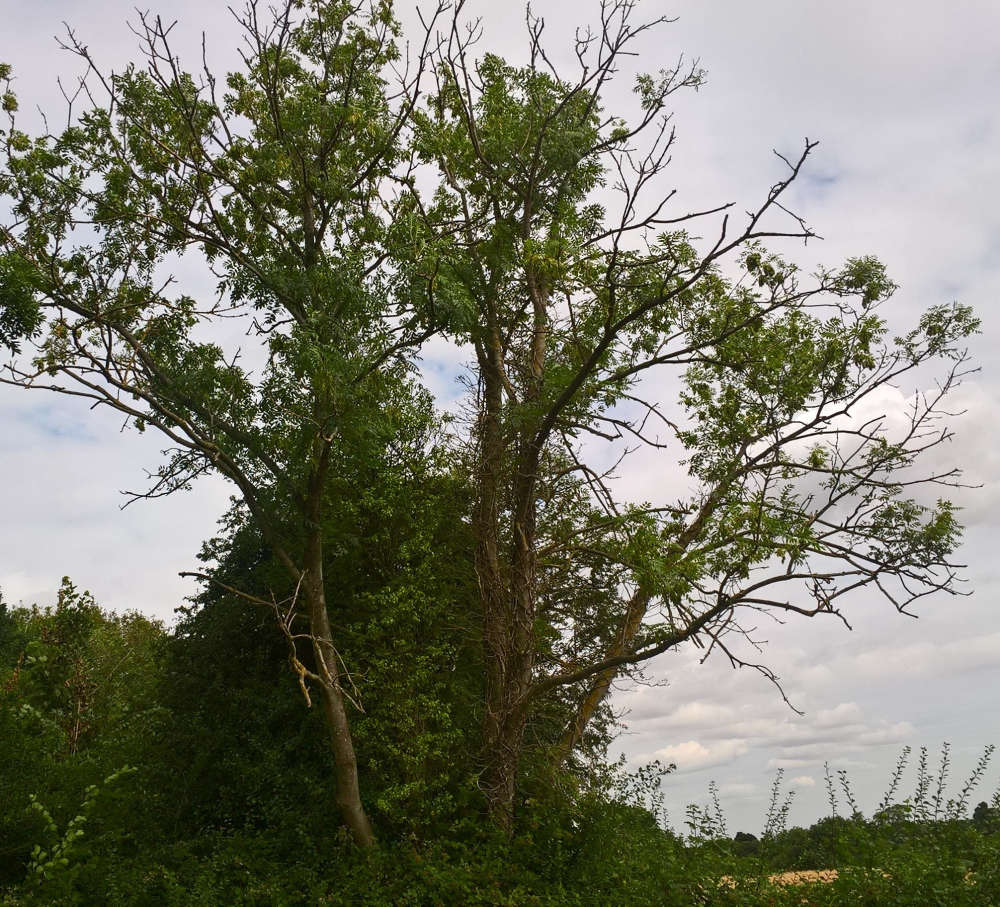
The area is dealing with the challenge of Ash dieback.
People in Leicestershire are being urged to play their part in keeping the countryside green by helping the county council identify and manage diseased Ash trees.
The authority’s scheme to plant a whopping 700,000 trees – one for every resident in the county, is already underway; but the council is also dealing with the challenge of Ash dieback.
The highly destructive disease is caused by a fungus and can lead to infected trees shedding branches or limbs, or potentially falling as the tree dies.

A healthy Ash tree

An unhealthy Ash tree
There are no exact figures of the number of Ash trees in Leicestershire, but it’s estimated there are over 500,000 in the county, with over 120,000 of them next to roads.
As many of these trees are on private land, the council has launched a campaign to raise awareness of the issue among residents, businesses and landowners to remind them of their responsibility to ensure their trees do not become a hazard to road users or people using adjacent pavements.
Councillor Blake Pain, cabinet member for environment and transport, said: "It's vital that everyone who has Ash trees on their property takes action to ensure they are safe.
"The county council has stepped up its safety inspections of trees in response to the threat from Ash dieback, which is no small task as there are thousands of Ash trees next to roads and on other properties”.
"Tree owners should have their trees regularly inspected by a professional so that, as the disease progresses, appropriate decisions in tree management can be made and accidents can be prevented. People should pay particular attention to Ash trees within areas where the failure of the whole tree or falling branches could place people or neighbouring property in danger."
Ash dieback enters a tree through the leaves and bark and young trees die within a couple of years, but mature trees usually take longer. However large trees can become dangerous long before they die, so owners must take action to ensure safety.
An infection at a point close to ground level can cause whole trees to become unstable and dangerous over much shorter periods with no obvious dieback symptoms in the crown. Diseased trees will show dead tips; sometimes discoloured and also a ‘pom-pom’ effect with clumps of living leaves around the areas affected by Ash dieback.
Cllr Pain added: “While safety is a priority, felling the tree should not be the first option, particularly as some Ash trees are known to show resistance to Ash Dieback, and we have been part of a national effort to secure genetic material from these trees to try to ensure the future of the species”.
"It is important to remember that Ash is one of our most common native trees and is incredibly valuable for wildlife. We would stress that you shouldn’t fell any trees unless you have to. In many cases it may be possible to reduce the risk by pruning branches, re-routing paths, or even repositioning items away from the tree so that people can avoid being in the immediate area.
"Always check trees for active bird nests or bat breeding or roosting sites, or other special species, well before undertaking any work.
"People should also be aware that, with certain exemptions, all trees in Britain are protected by the Forestry Act, which means that a felling licence is required to remove them. Tree owners should be clear that their tree is in an exempted category, which includes trees in gardens; or obtain a licence, before any felling takes place."


 Visiting hours extended across Leicestershire Partnership NHS Trust community hospitals and mental health services
Visiting hours extended across Leicestershire Partnership NHS Trust community hospitals and mental health services
 Local NHS wants people to take part in bowel cancer screening
Local NHS wants people to take part in bowel cancer screening
 Appeal for witnesses after pedestrian seriously injured in Hinckley collision
Appeal for witnesses after pedestrian seriously injured in Hinckley collision
 George Eliot Maternity Bereavement team named team of the year at national awards
George Eliot Maternity Bereavement team named team of the year at national awards
 Nominations open for awards celebrating Leicestershire Partnership NHS Trust staff
Nominations open for awards celebrating Leicestershire Partnership NHS Trust staff
 Appeal for witnesses to collision near George Eliot Hospital
Appeal for witnesses to collision near George Eliot Hospital
 Hinckley AFC lifts the Midland League Division One trophy
Hinckley AFC lifts the Midland League Division One trophy








